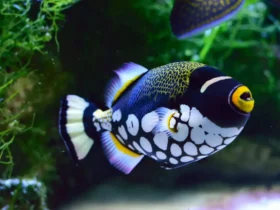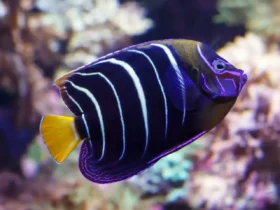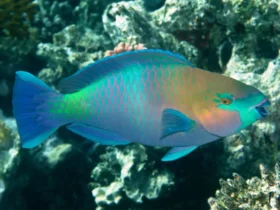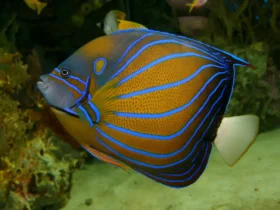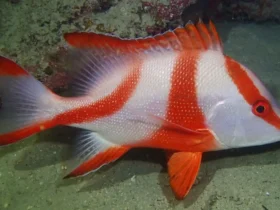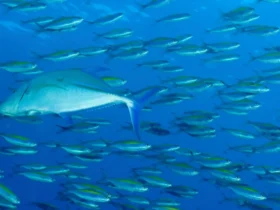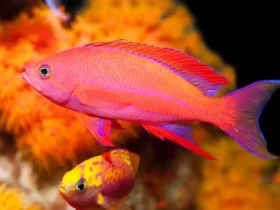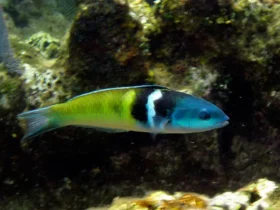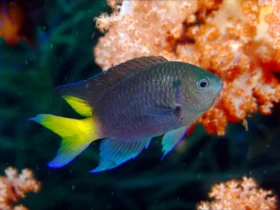In the vibrant underwater world of coral reefs, a captivating fish with a striking appearance and graceful movements catches the eye of divers and aquarium enthusiasts. Enter the realm of the Achilles Tang (Acanthurus achilles), a magnificent species known for its vivid colors, unique markings, and intriguing behavior. In this article, we will dive into the captivating world of the Achilles Tang, exploring its distinct characteristics, natural habitat, and the importance of responsible care for this beautiful marine creature.
Achilles Tang images
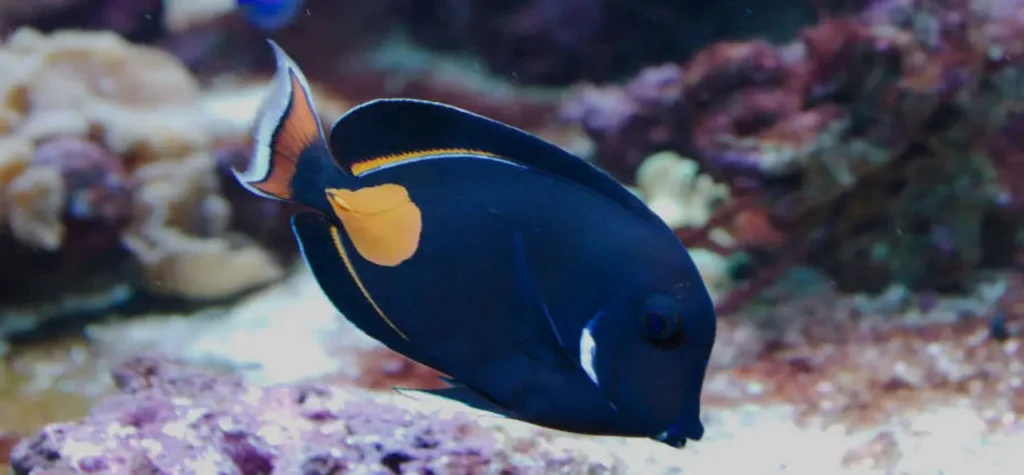
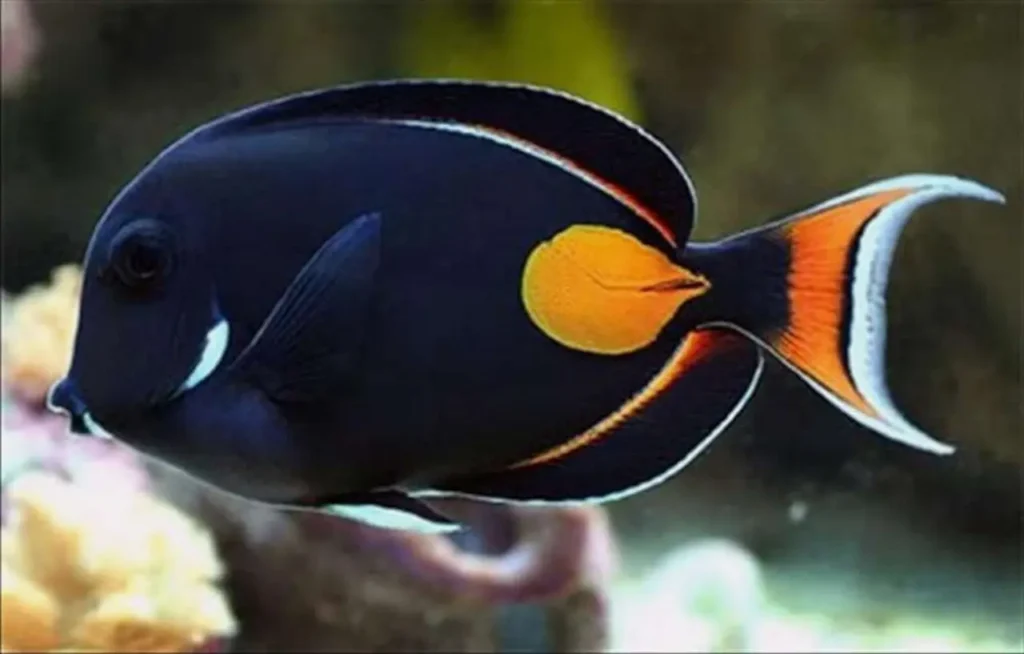
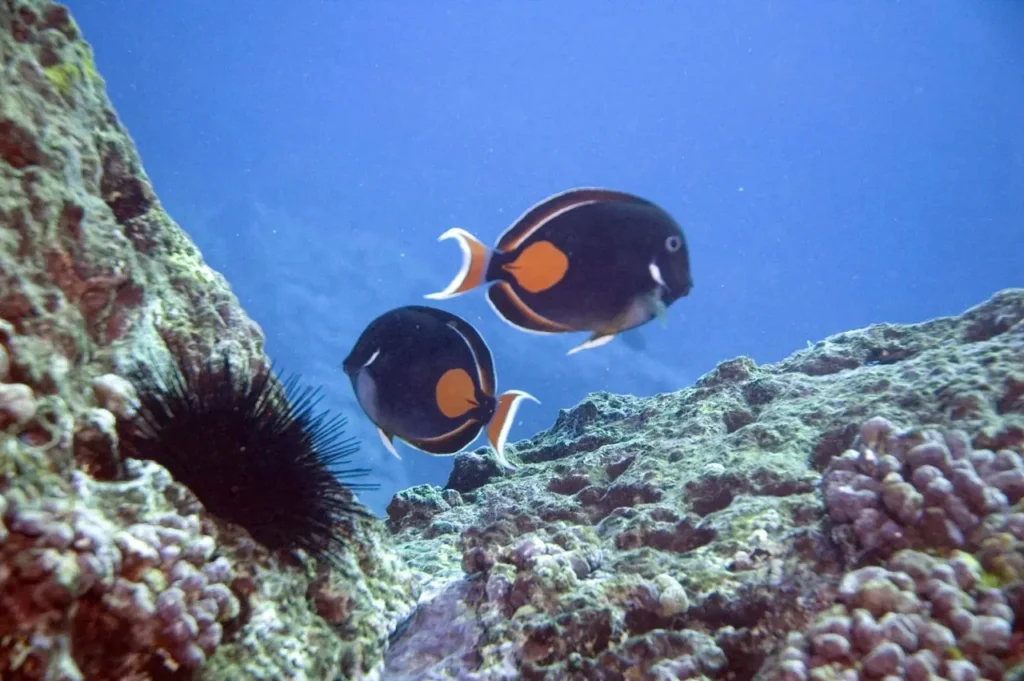
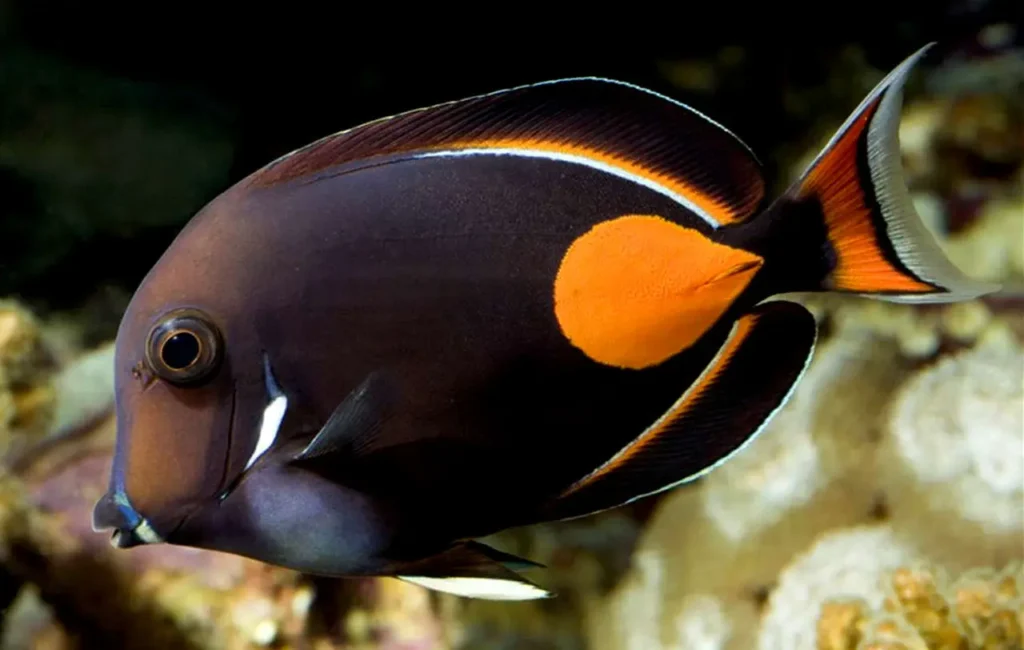
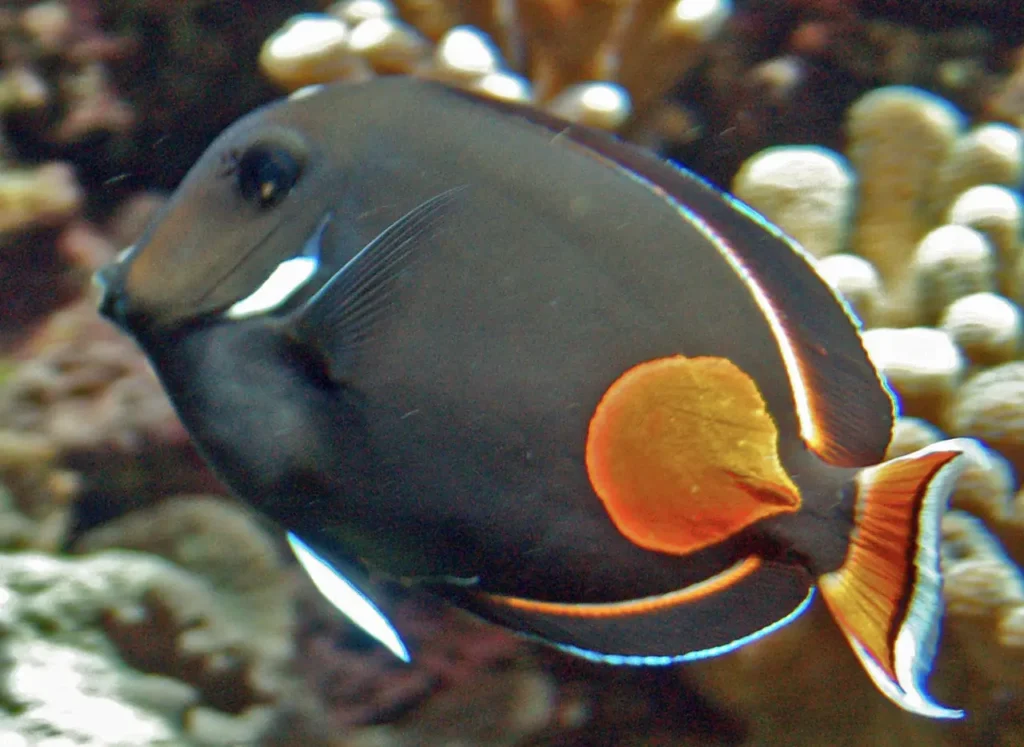
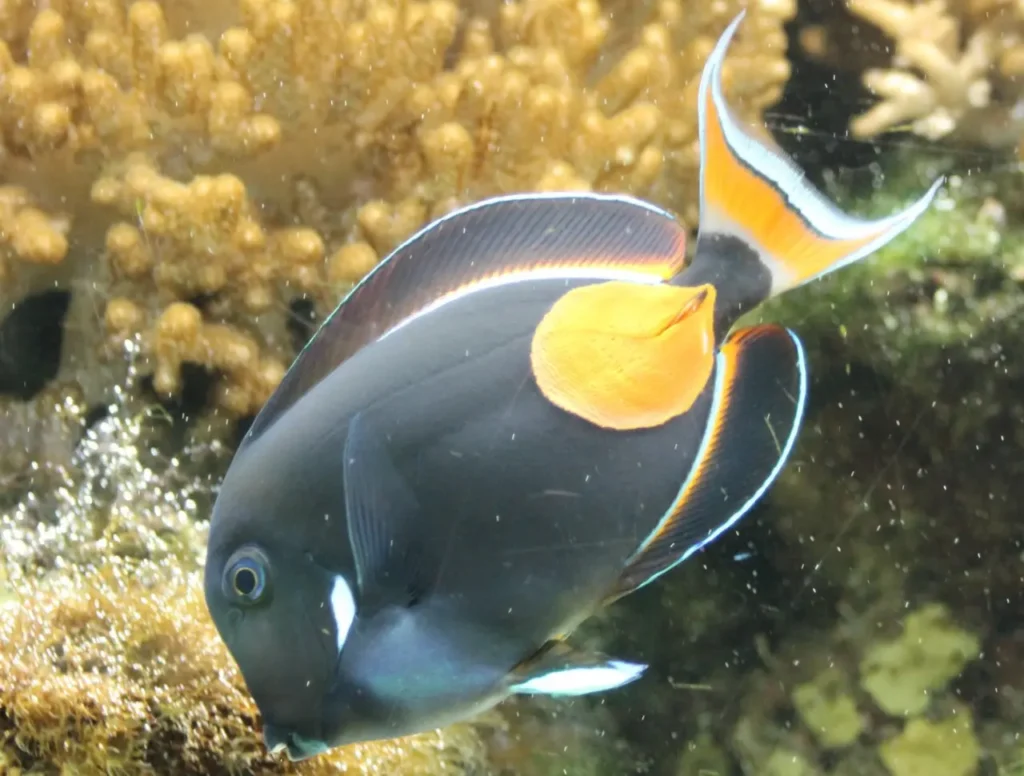
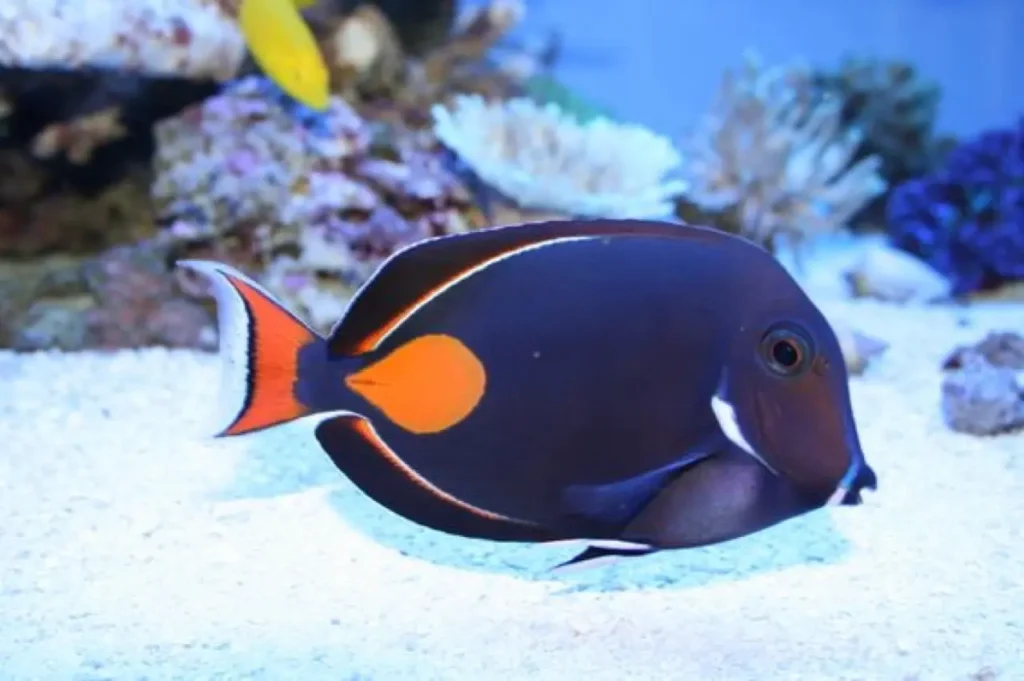
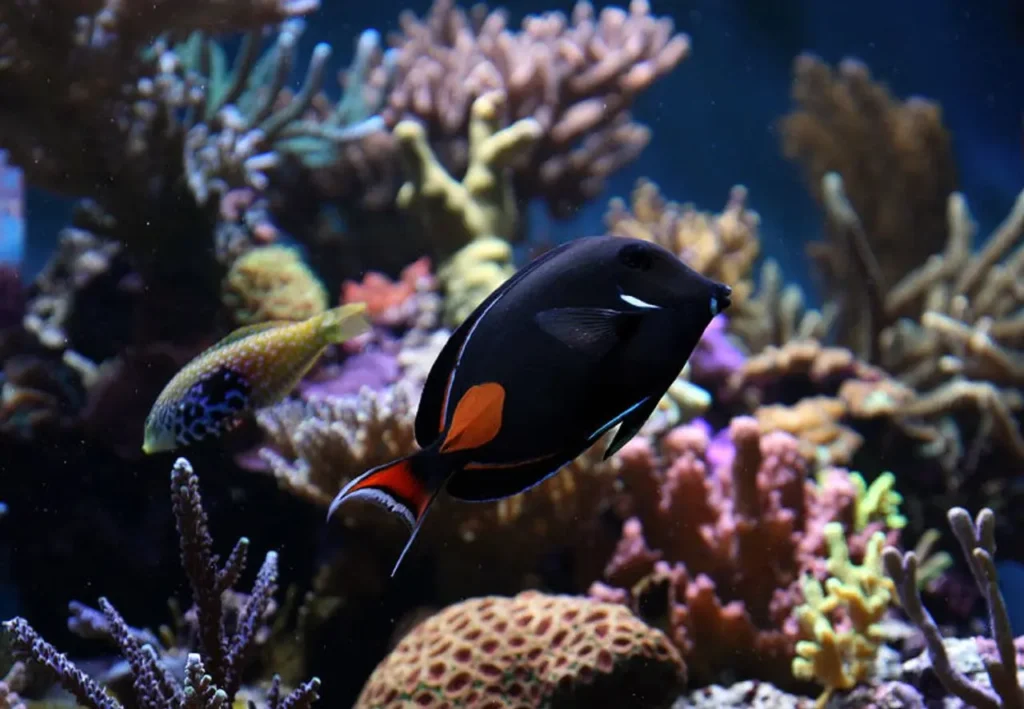
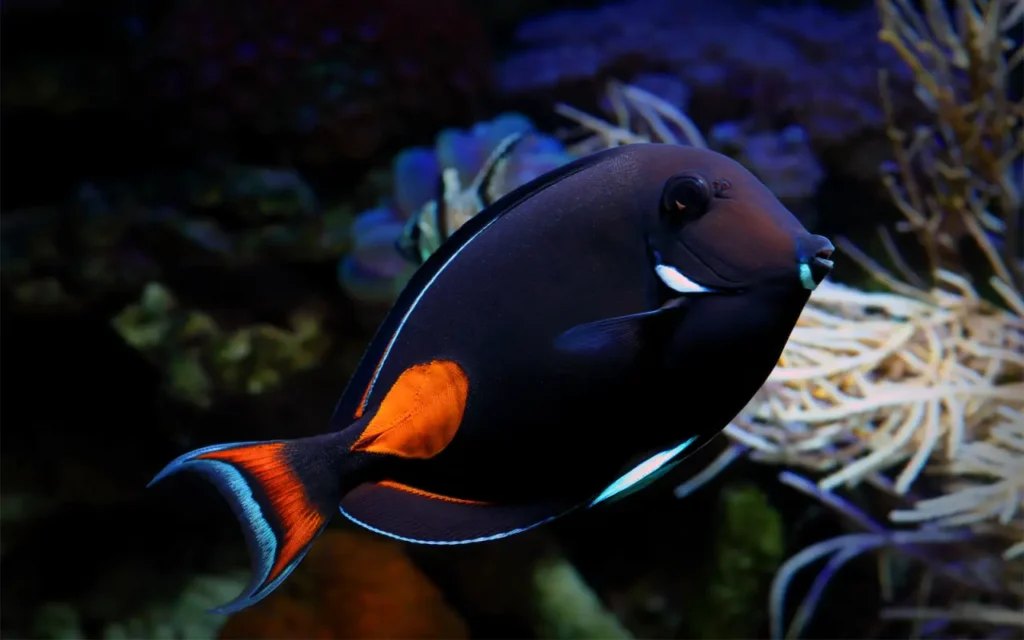
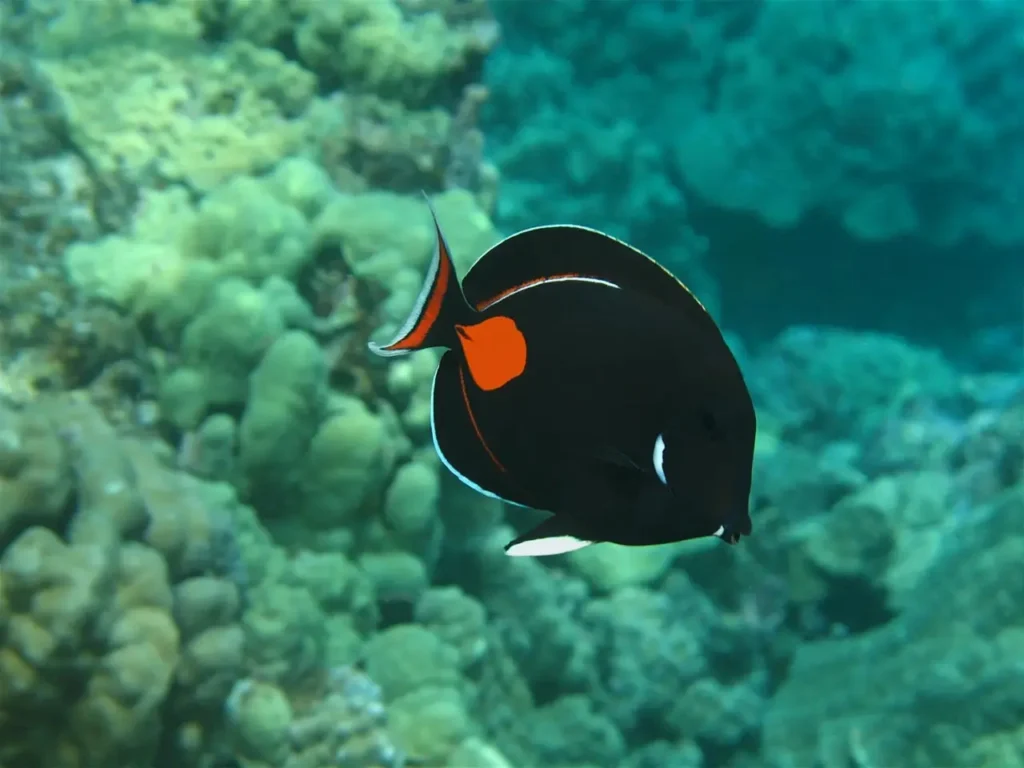
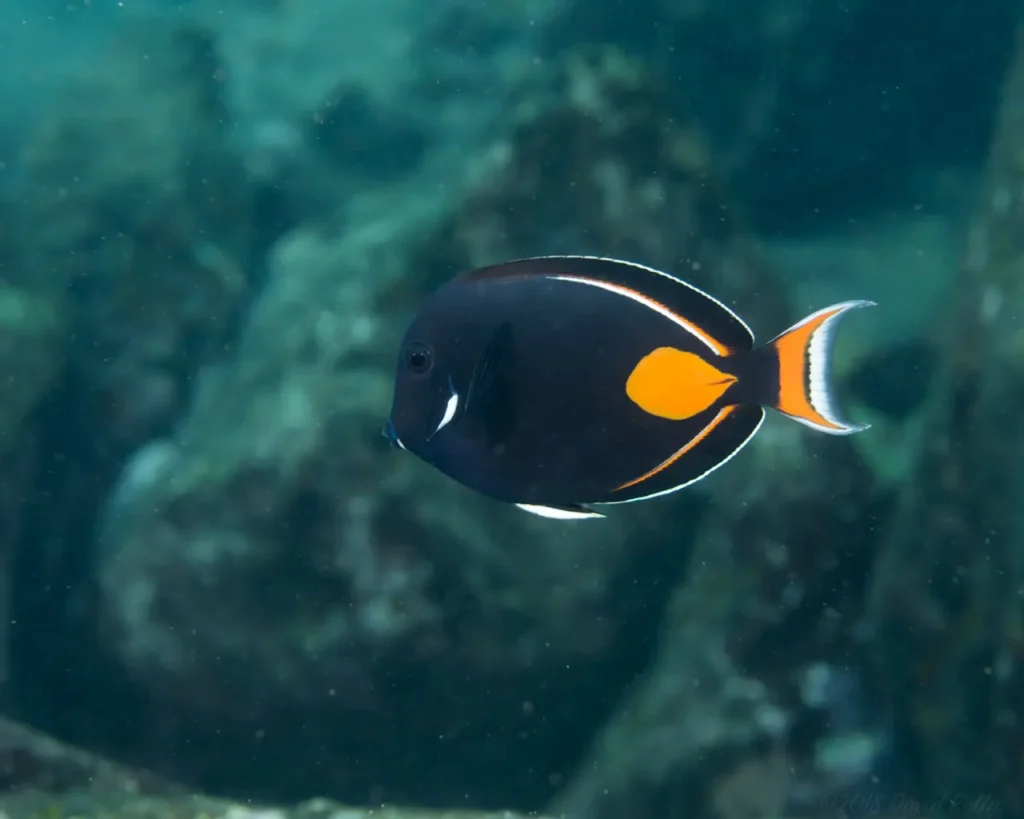
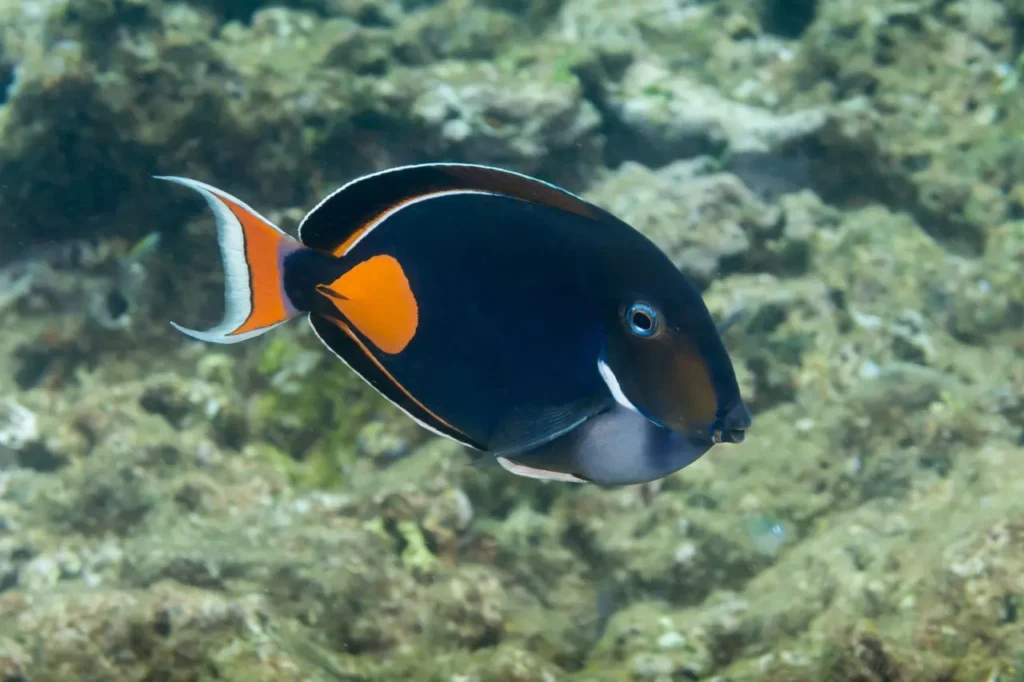
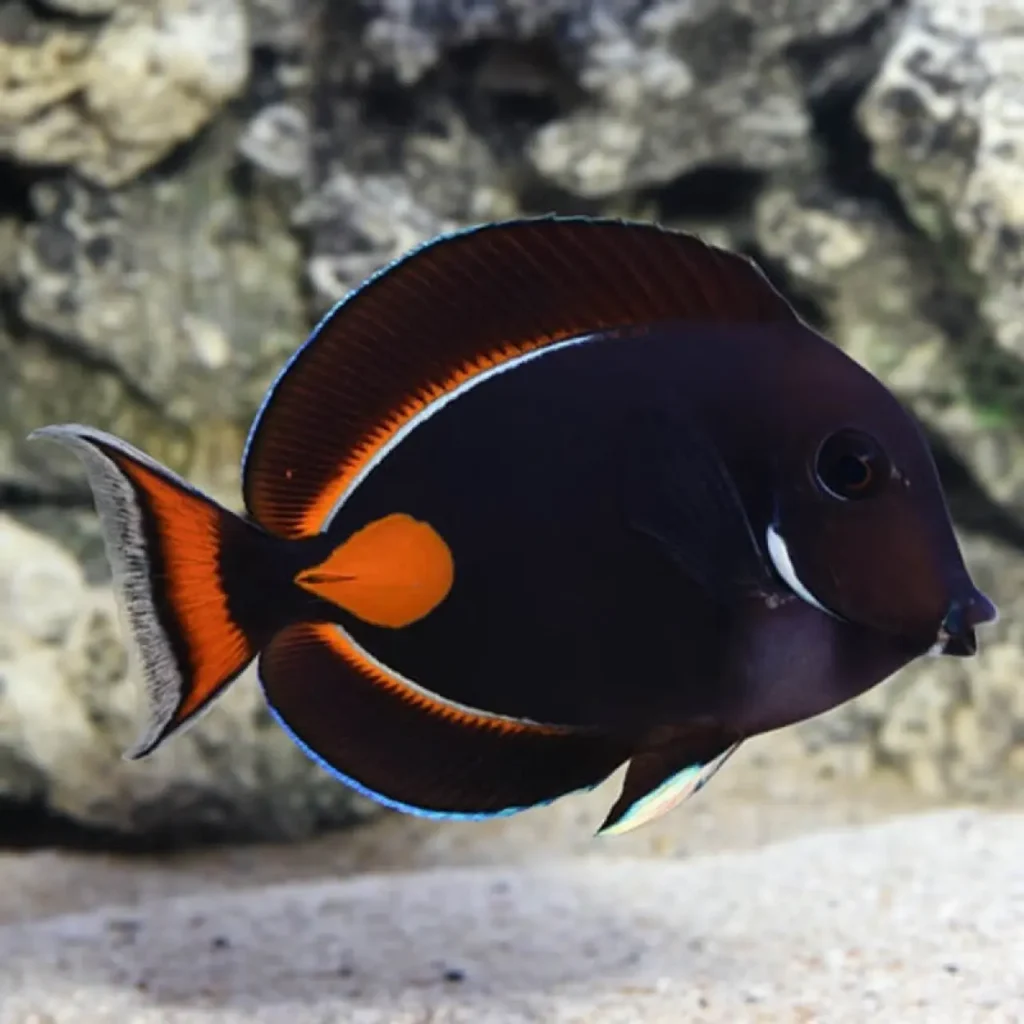
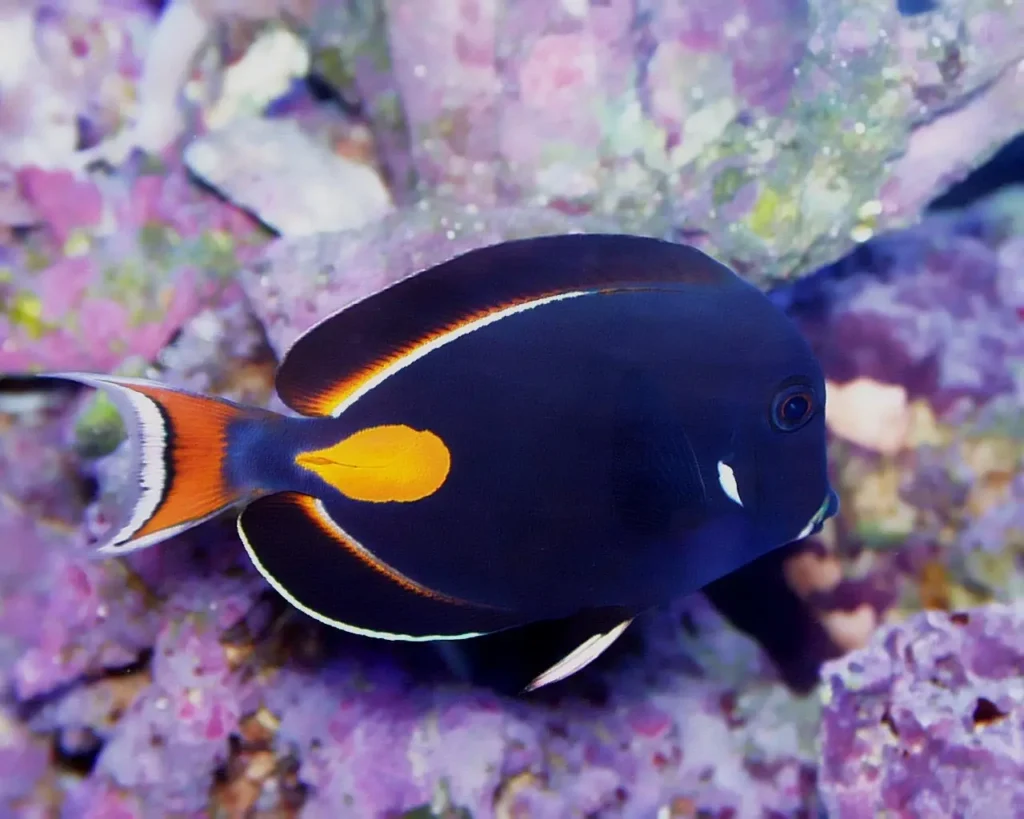
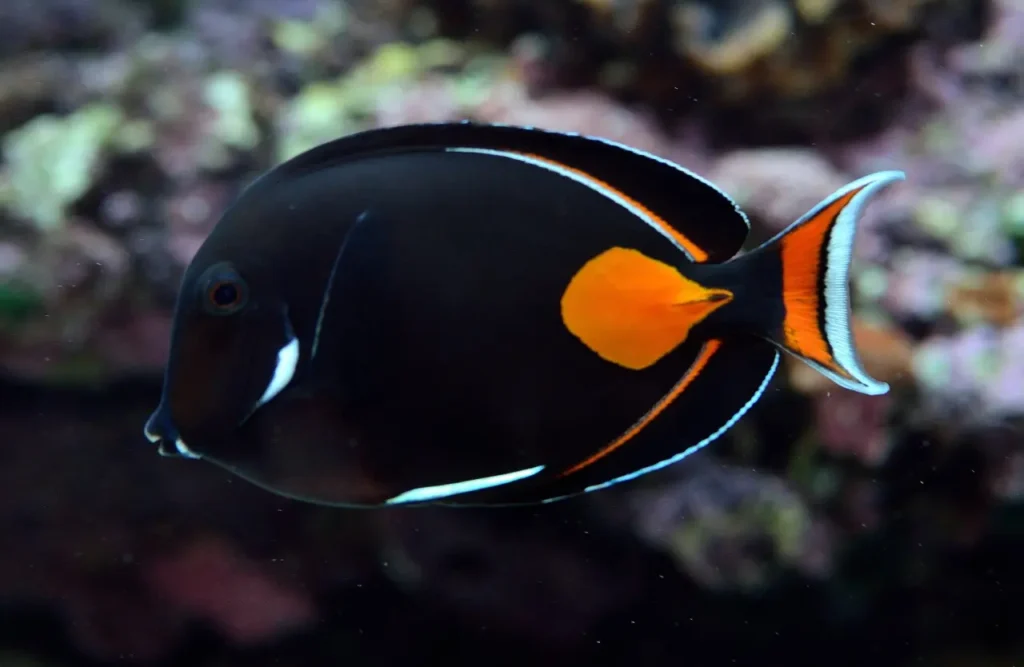
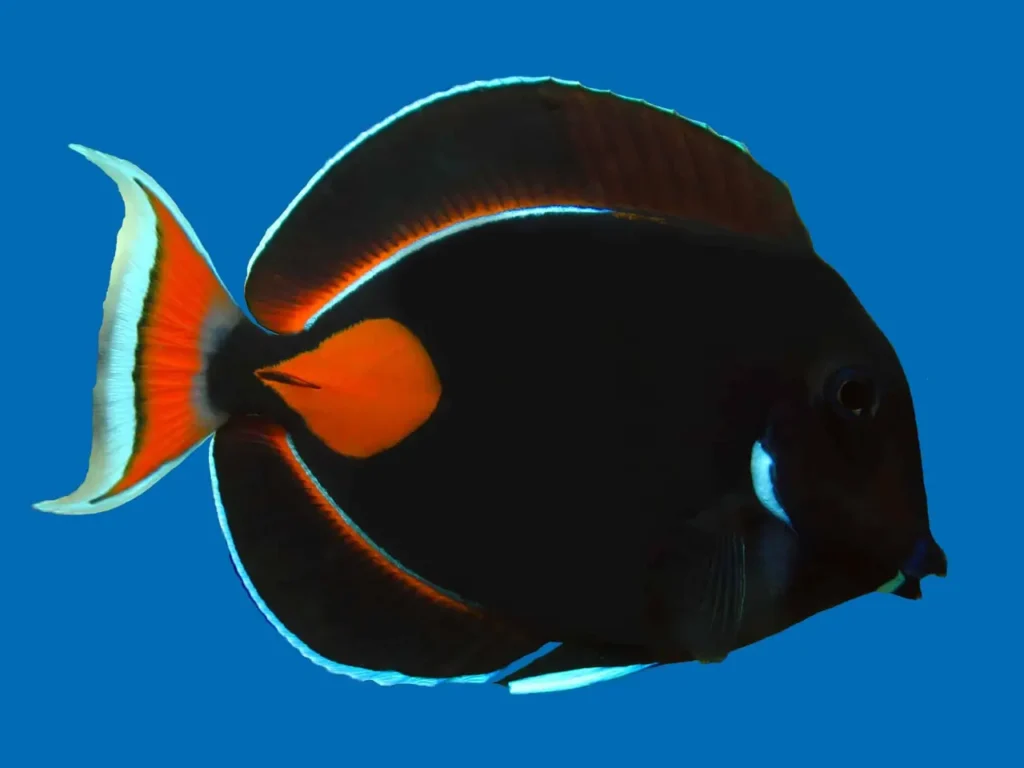
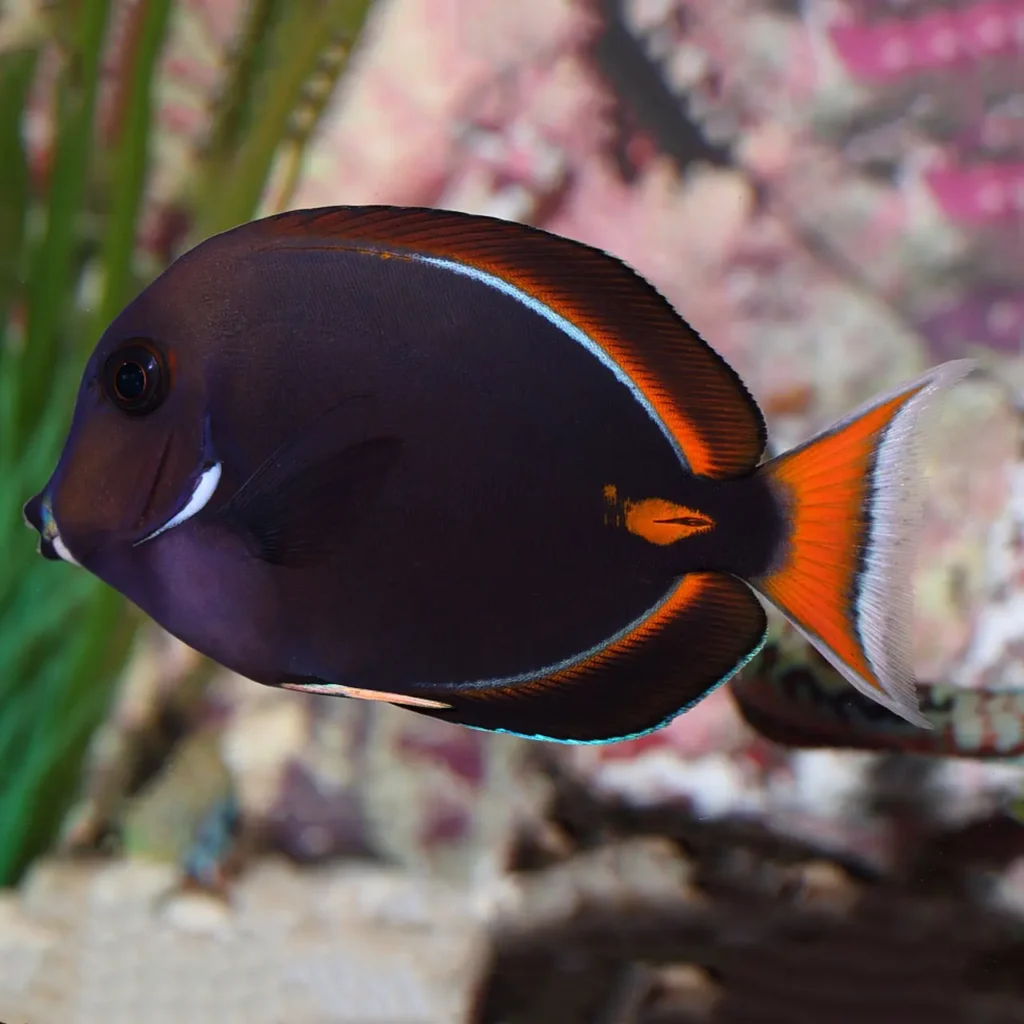
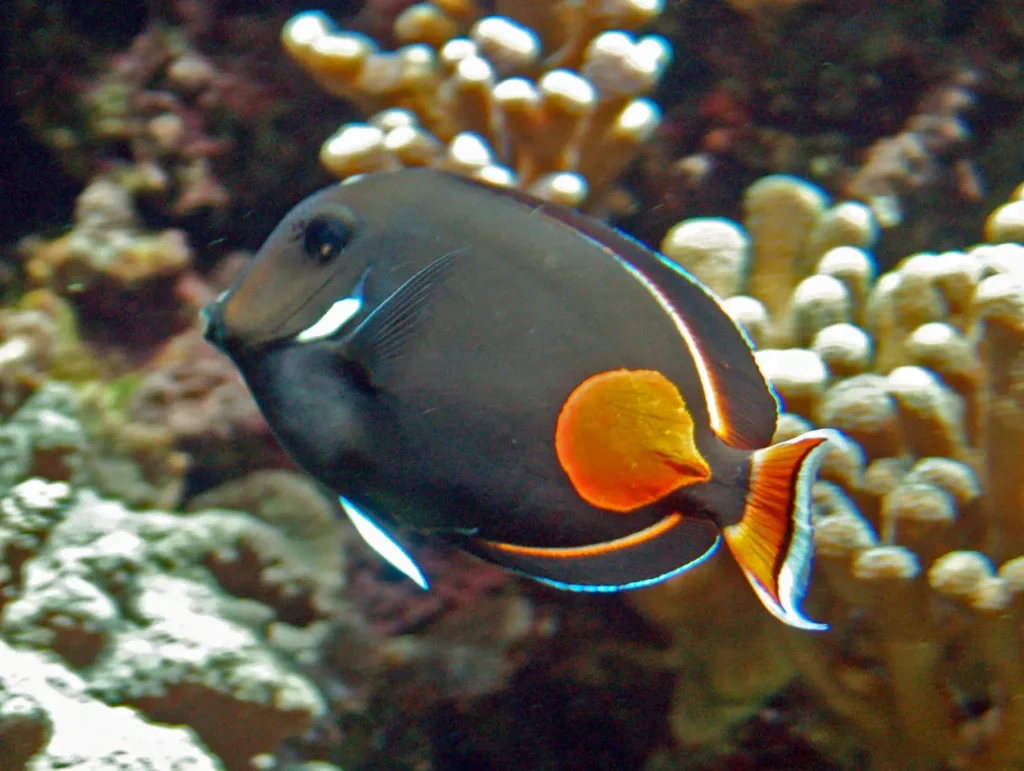
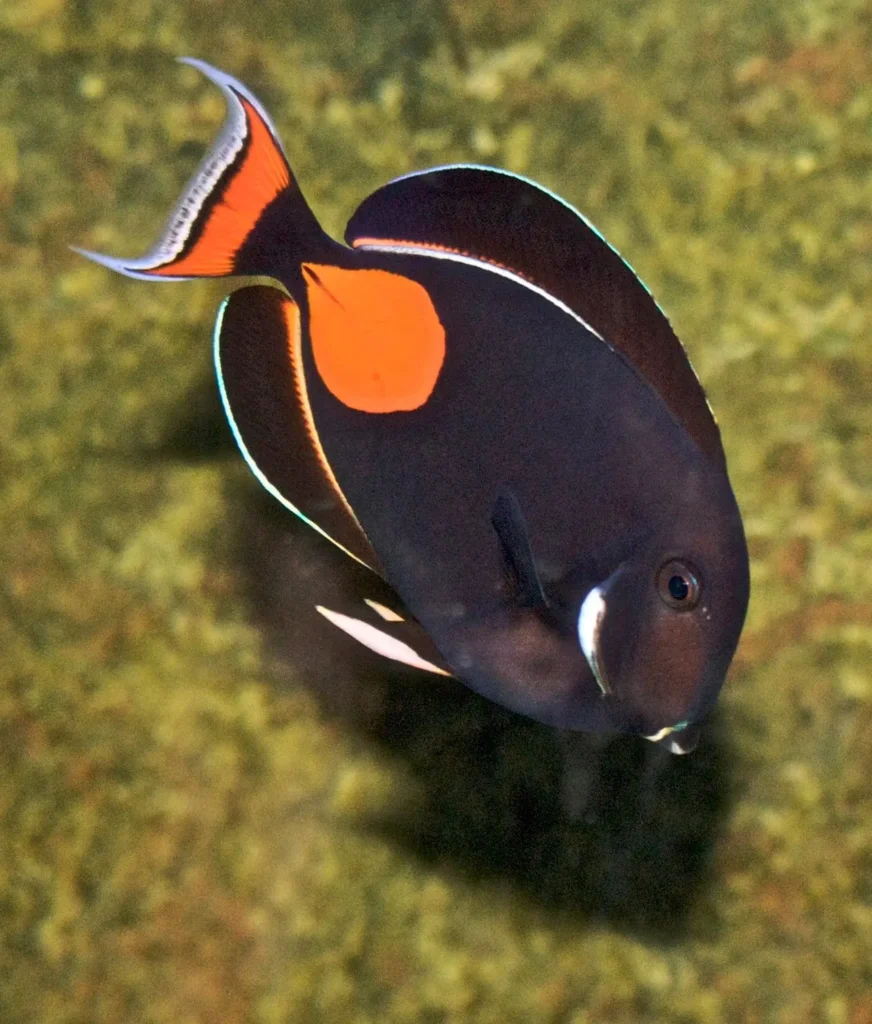
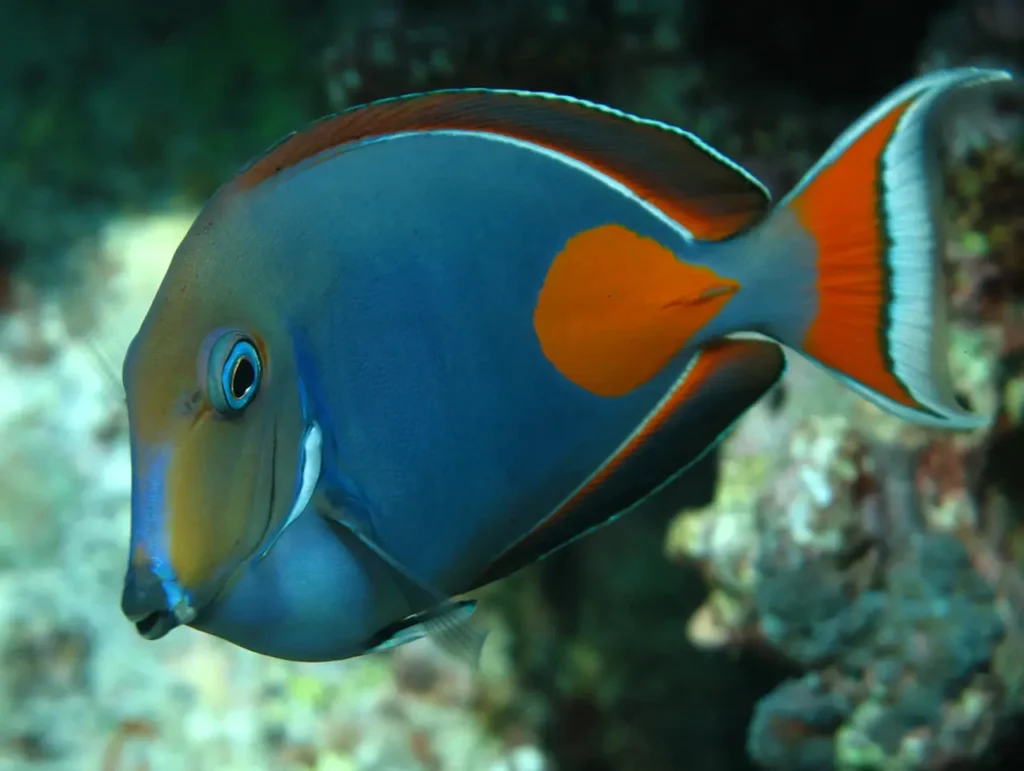
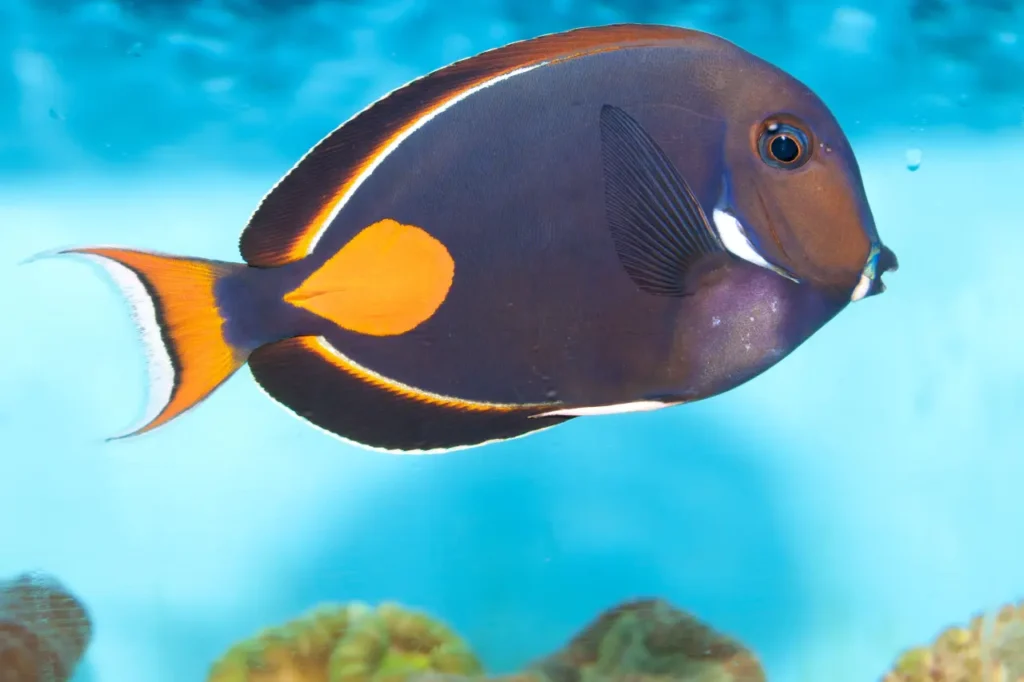
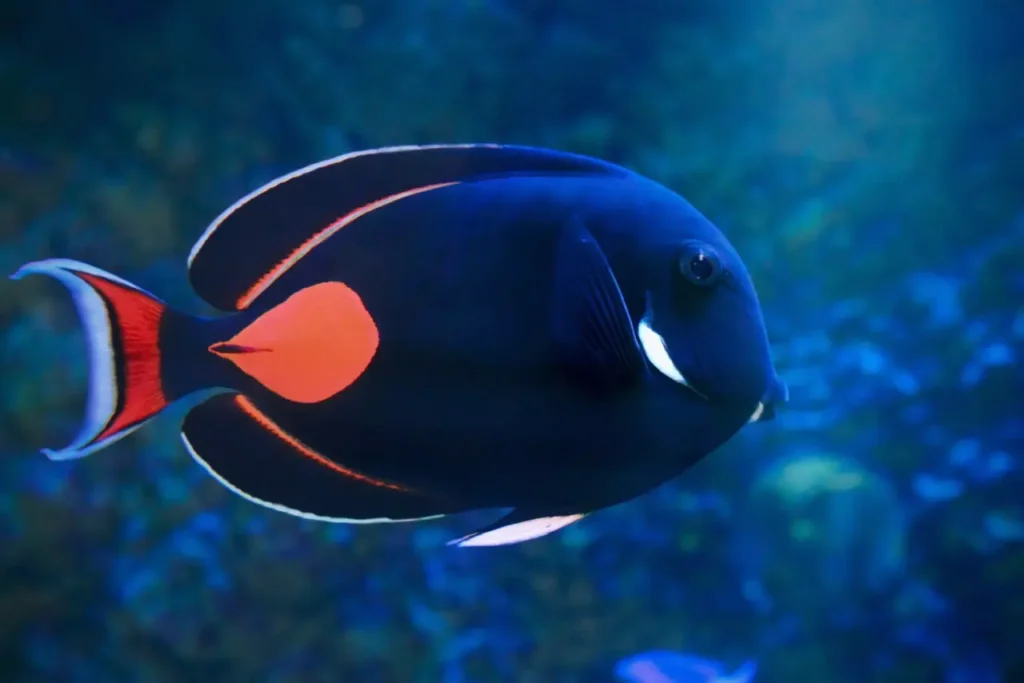
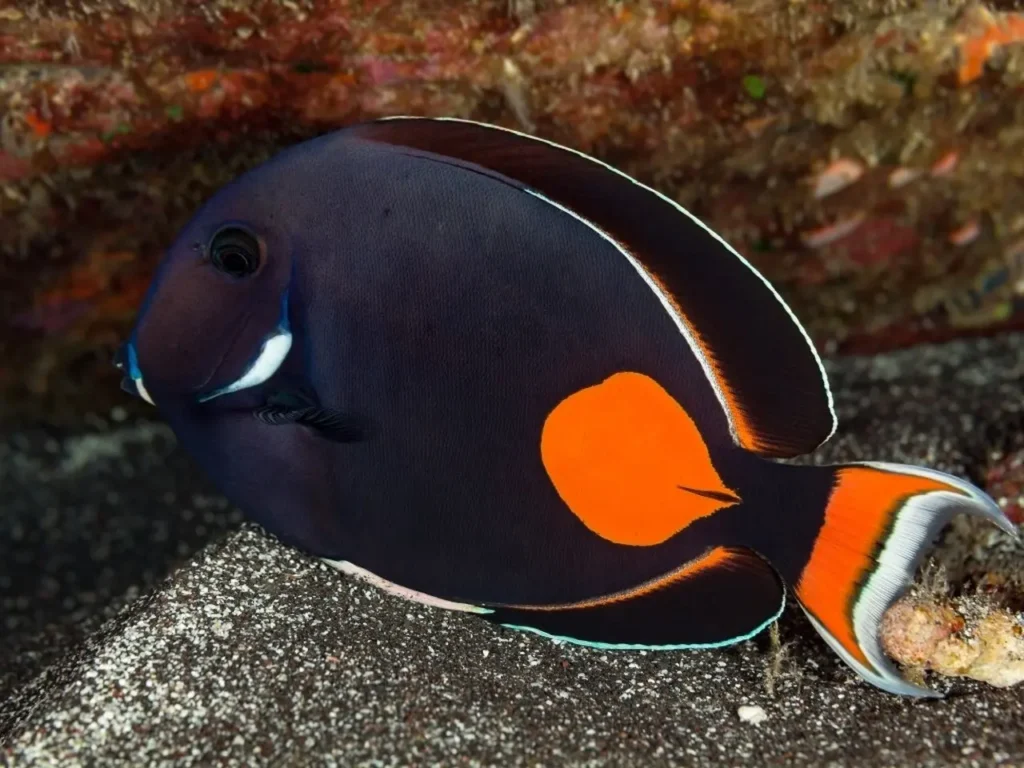
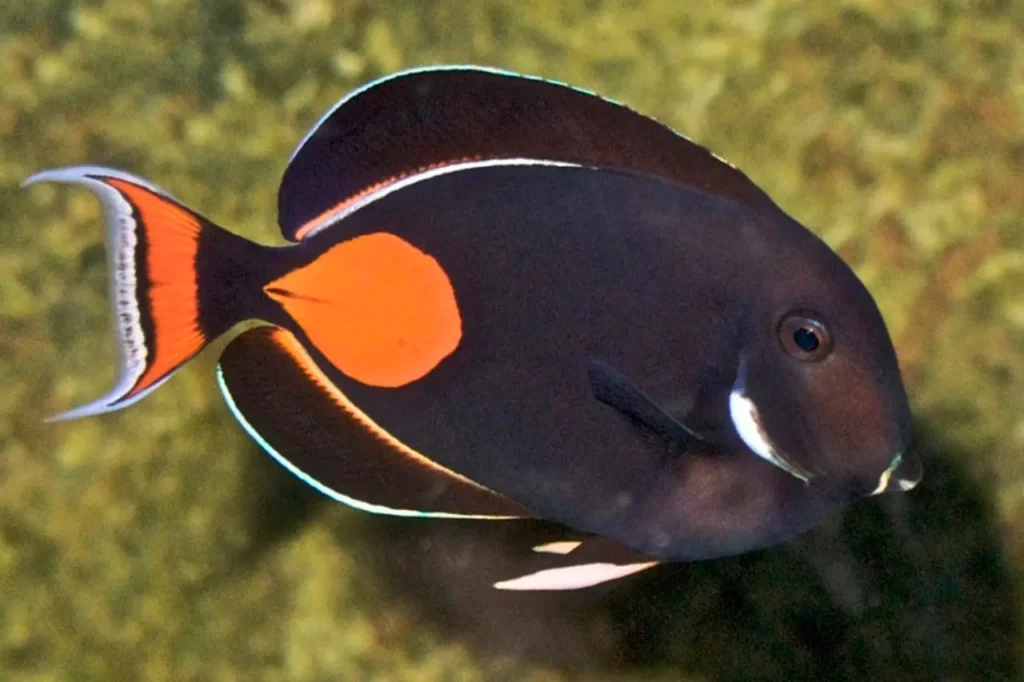
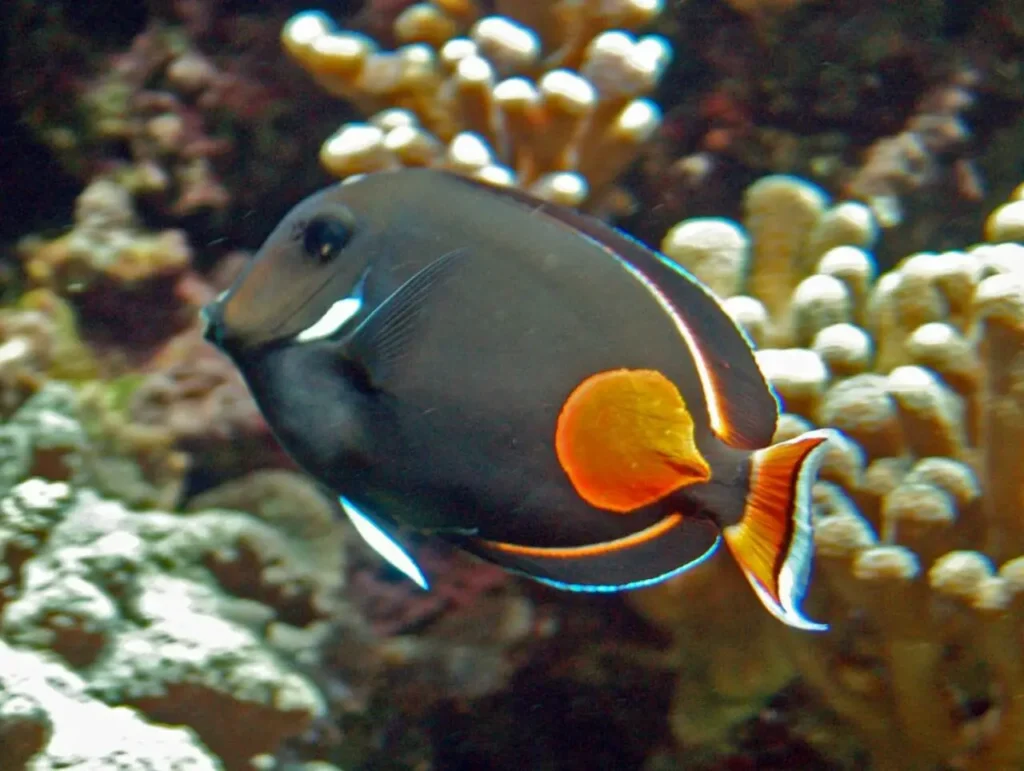
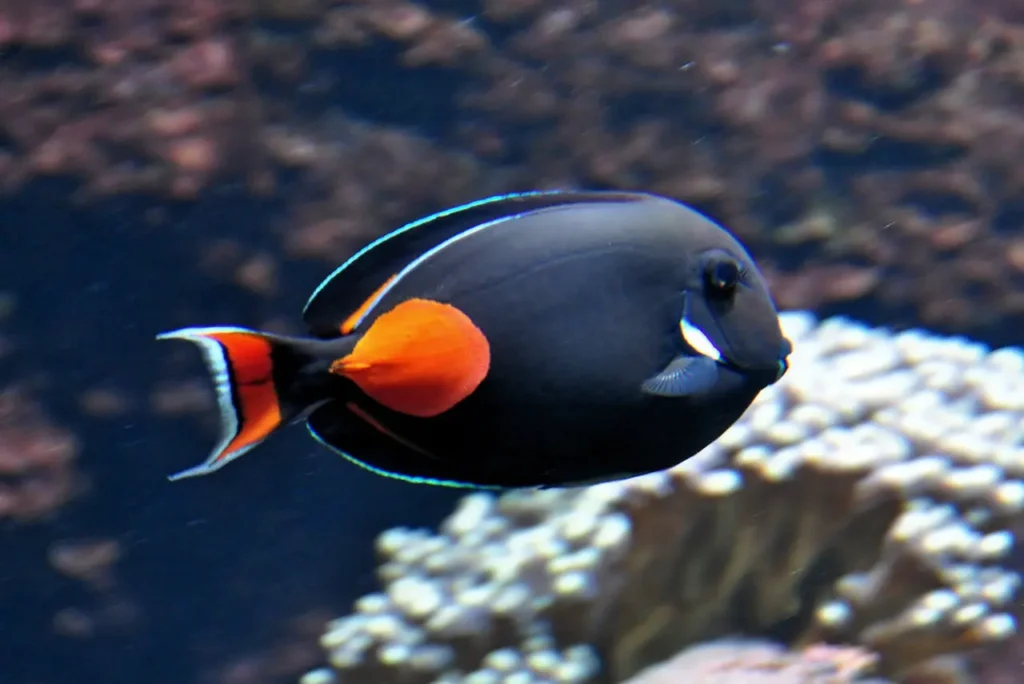
Appearance and Markings
The Achilles Tang is a species of surgeonfish characterized by its eye-catching coloration and distinct patterns. Its body is primarily black, adorned with a vibrant orange patch located near the caudal peduncle. The fish possesses a narrow white band that runs vertically across the center of its body, extending from the gill cover to the tail. Additionally, the fish displays a thin, bright orange line that outlines the black body, contributing to its remarkable appearance.
Distinctive Fin and Spine
One of the notable features of the Achilles Tang is its elongated dorsal fin, which extends elegantly above its body. This fin is accentuated by a prominent, sharp spine located near its base. While the spine serves as a defense mechanism against potential predators, it should be handled with caution, as it can cause injury if mishandled.
Natural Habitat and Distribution
The Achilles Tang is native to the Indo-Pacific region, specifically inhabiting the coral reefs of the western Pacific Ocean. These vibrant ecosystems provide the tang with an abundant food supply and a variety of hiding places among the reef structures. They can be found at varying depths, but are often observed in the shallower portions of the reef.
Behavior and Feeding Habits
Achilles Tangs are known for their active and graceful swimming patterns, gracefully navigating the reef with their streamlined bodies. They are primarily herbivorous, feeding on a diet of algae and other plant matter found on the reef. Their constant grazing helps control the growth of algae and contributes to the overall health of the reef ecosystem.
Aquarium Care Considerations
The Achilles Tang is a highly sought-after species in the aquarium trade, but it requires specific care to thrive in a captive environment. Due to its size and activity level, a spacious aquarium with ample swimming space is essential. Additionally, providing a well-maintained reef-like environment with live rock for grazing and hiding places is crucial.
Maintaining excellent water quality, stable temperature, and proper lighting are essential for the well-being of the Achilles Tang. A diverse and balanced herbivorous diet, including high-quality marine algae and supplemental foods, should be provided to meet their nutritional needs.
Conservation Awareness
Conservation efforts are crucial to ensure the long-term survival of the Achilles Tang and its coral reef habitat. Irresponsible collection practices and habitat destruction pose significant threats to wild populations. Supporting sustainable aquarium trade practices, promoting responsible reef aquarium care, and raising awareness about the importance of coral reef conservation are vital steps in preserving the beauty and diversity of marine ecosystems.
The Achilles Tang, with its vibrant colors, unique markings, and graceful movements, brings a touch of elegance to the underwater world. Its presence in the coral reefs is a reminder of the extraordinary biodiversity that inhabits our oceans. By fostering responsible care and conservation efforts, we can help protect the Achilles Tang and the fragile ecosystems it calls home, ensuring the continued splendor of these ocean wonders for generations to come.
